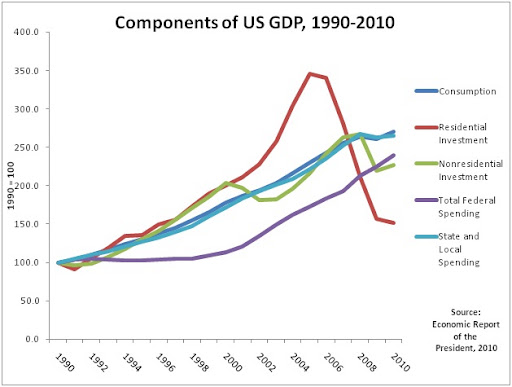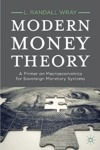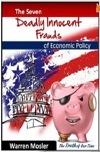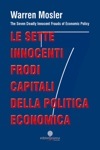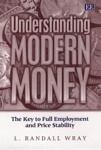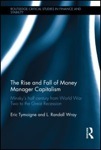By Michael Hudson
A year ago, in March 2010, Iceland’s economy was so small that it did not warrant much attention when 93% of its voters rejected the Social Democratic-Green government’s surrender to demands by Gordon Brown and the Dutch, the European Union (EU) bureaucracy and IMF that the island nation impose austerity. Britain and the Netherlands wanted to be reimbursed for having paid out more than $5 billion to some 340,000 of their own depositors – whom their own bank oversight agencies had failed to warn about the looting that was going on.
Iceland’s taxpayers were told to bear the cost, as virtual tribute. In effect, it was to be penance for believing the neoliberal fairy tales about how bank deregulation and “free markets” would make it the richest, happiest country in the world. Indeed it seemed to be, according to United Nations data. But the dream was dashed after the Icesave electronic Internet bank branches abroad were emptied out by their proprietors.
The dream was the neoliberal promise that running into debt was the way to get rich. Nobody at the time anticipated that taking private (and indeed, fraudulent) bank losses onto the public balance sheet would become the theme dividing Europe over the coming year, dividing European politics and even threatening to break up the Eurozone.
A landmark in this fight is to occur this Saturday, April 9. Icelanders will vote on whether to subject their economy to decades of poverty, bankruptcy and emigration of their work force. At least, that is the program supported by the existing Social Democratic-Green coalition government in urging a “Yes” vote on the Icesave bailout. Their financial surrender policy endorses the European Central Bank’s lobbying for the neoliberal deregulation that led to the real estate bubble and debt leveraging as if it were a success story rather than the road to national debt peonage. The reality was an enormous banking fraud and insider dealing as bank managers lent the money to themselves, leaving an empty shell – and then saying that this was all how “free markets” operate. Running into debt was promised to be the way to get rich. But the price to Iceland was for housing prices to plunge 70% (in a country where mortgage debtors are personally liable for their negative equity), a falling GDP, rising unemployment, defaults and foreclosures.
To put Saturday’s vote in perspective, it is helpful to see what has occurred in the past year along remarkably similar lines throughout Europe. For starters, the year has seen a new acronym: PIIGS, for Portugal, Ireland, Italy, Greece and Spain.
The eruption started in Greece. One legacy of the colonels’ regime was tax evasion by the rich. This led to budget deficits, and Wall Street banks helped the government conceal its public debt in “free enterprise” junk accounting. German and French creditors then made a fortune jacking up the interest rate that Greece had to pay for its increasing credit risk.
Greece was told to make up the tax shortfall by taxing labor and charging more for public services. This increases the cost of living and doing business, making the economy less competitive. That is the textbook neoliberal response: to turn the economy into a giant set of tollbooths. The idea is to slash government employment, lowering public-sector salaries to lead private-sector wages downward, while sharply cutting back social services and raising the cost of living with tollbooth charges on highways and other basic infrastructure.
The Baltic Tigers had led the way, and should have stood as a warning to the rest of Europe. Latvia set a record in 2008-09 by obeying EU Economics and Currency Commissioner Joaquin Almunia’s dictate and slashing its GDP by over 25% and public-sector wages by 30%. Latvia will not recover even its 2007 pre-crisis GDP peak until 2016 – an entire lost decade spent in financial penance for believing neoliberal promises that its real estate bubble was a success story.
In autumn 2009, Socialist premier George Papandreou promised an EU summit that Greece would not default on its €298bn debt, but warned: “We did not come to power to tear down the social state. Salaried workers will not pay for this situation: we will not proceed with wage freezes or cuts.” [1] But that seems to be what socialist and social democratic parties are for these days: to tighten the screws to a degree that conservative parties cannot get away with. Wage deflation is to go hand in hand with debt deflation and tax increases to shrink the economy.
The EU and IMF program inspired the modern version of Latin America’s “IMF riots” familiar from the 1970s and ‘80s. Mr. Almunia, the butcher of Latvia’s economy, demanded reforms in the form of cutbacks in health care, pensions and public employment, coupled with a proliferation of taxes, fees and tolls from roads to other basic infrastructure.
The word “reform” has been turned into a euphemism for downsizing the public sector and privatization sell-offs to creditors at giveaway prices. In Greece this policy inspired an “I won’t pay” civil disobedience revolt that grew quickly into “a nationwide anti-austerity movement. The movement’s supporters refuse to pay highway tolls. In Athens they ride buses and the metro without tickets to protest against an ’unfair’ 40 per cent increase in fares.” [2] The police evidently are sympathetic enough to refrain from fining most protesters.
All this is changing traditional political alignments not only in Greece but throughout Europe. The guiding mentality of Tony Blair-style “New Labour” policy is economic loyalty to Europe’s financial centers as government spending is slashed, public infrastructure privatized and banks bailed out with “taxpayer” burdens that fall mainly on labor. “Both the conservative and communist leaders have refused to support the EU-IMF programme. ‘This programme is strangling the Greek economy … it needs renegotiation and radical change,’ said Antonis Samaras, the conservative leader.” (Ibid.)
A Le Monde article accused the EU-IMF plan of riding “roughshod over the most elementary rules of democracy. If this plan is implemented, it will result in a collapse of the economy and of peoples’ incomes without precedent in Europe since the 1930s. Equally glaring is the collusion of markets, central banks and governments to make the people pay the bill for the arbitrary caprice of the system.” [3]
Ireland is the hardest hit Eurozone economy. Its long-term ruling Fianna Fail party agreed to take bank losses onto the public balance sheet, imposing what looks like decades of austerity – and the largest forced emigration since the Potato Famine of the mid-19th century. Voters responded by throwing the party out of office (it lost two-thirds of its seats in Parliament) when the opposition Fine Gael party promised to renegotiate last November’s $115-billion EU-IMF bailout loan and its accompanying austerity program.
A Financial Times editorial referred to the “rescue” package (a euphemism for financial destruction) as turning the nation into “Europe’s indentured slave.” [4] EU bureaucrats “want Irish taxpayers to throw more money into holes dug by private banks. As part of the rescue, Dublin must run down a pension fund built up when Berlin and Paris were violating the Maastricht rules. … so long as senior bondholders are seen as sacrosanct, fire sales of assets carry a risk of even greater losses to be billed to taxpayers.” EU offers to renegotiate the deal promise only token concessions that fail to rescue Ireland from making labor and industry pay for the nation’s reckless bank loans. Ireland’s choice is thus between rejection of or submission to EU demands that its government “make bankers whole” at the expense of labor and industry. It is reminiscent of when the economist William Nassau Senior (who took over Thomas Malthus’s position at the East India College) was told that a million people had died in Ireland’s potato famine. He remarked succinctly: “It is not enough.” So neoliberal junk economics has a long pedigree.
The result has radically reshaped the idea of national sovereignty and even the basic assumption underlying all political theory: the premise that governments act in the national interest. As Yves Smith’s Naked Capitalism website has pointed out:
The eurozone is up against Dani Rodrik’s trilemma: Democratic politics and the Nation State vs globalism based on the Bretton Woods system. You cannot have all three corners of the triangle at once. The creators of the European Union knew that the end game was the dissolution of nation states. …
But what they failed to anticipate is that the costs of these crises would be visited on the inhabitants of particular nation states, and that would lead them to rebel against the “inevitable” integration. As long as democratic mechanisms are intact in enough of the countries being pressed to wear the austerity hairshirt, revolt is indeed possible. Economists argue that the cost for any nation to exit the eurozone is prohibitive. But how does that stack up with a “rescue” program that virtually guarantees continued economic contraction and depopulation for Ireland? Faced with two unattractive alternatives, the desire for self-determination and for punishment of coercive European technocrats may make supposedly irrational moves seem compelling. [5]
The shape of Europe that is emerging is not the original view of mobilizing technology to raise living standards. The leaders who originally sponsored the EU viewed nation states as having plunged the continent into a millennium of warfare. But today, finance is the new mode of warfare. Its objective is the same as military conquest: to seize the land and basic infrastructure, and to levy tribute – euphemized as bailout repayments, as if the financial system were necessary to fuel industry and labor rather than siphoning off their surplus.
The Irish government’s €10 billion interest payments are projected to absorb 80% of the government’s 2010 income tax revenue. This is beyond the ability of any national government or economy to survive. It means that all growth must be paid as tribute to the EU for having bailed out reckless bankers in Germany and other countries that failed to realize the seemingly obvious fact that debts that can’t be paid won’t be. The problem is that during the interim it takes to realize this, economies will be destroyed, assets stripped, capital depleted and much labor obliged to emigrate. Latvia is the poster child for this, with a third of its population between 20 and 40 years old already having emigrated or reported to be planning to leave the country within the next few years.
The EU’s nightmare is that voters may wake up in the same way that Argentina finally did when it announced that the neoliberal advice it had taken from U.S. and IMF advisors had destroyed the economy so much that it could not pay. As matters turned out, it had little trouble in imposing a 70% write-down on foreign creditors. Its economy is now booming – because it became credit-worthy again, once it freed itself from its financial albatross!
Much the same occurred in Latin America and other Third World countries after Mexico announced that it could not pay its foreign debts in 1982. A wave of defaults spread – inspiring negotiated debt write-downs in the form of Brady Bonds. U.S. and other creditors calculated what debtors realistically could pay, and replaced the old irresponsible bank loans with new bonds. The United States and IMF members applauded the write-downs as a success story.
But Ireland, Greece and Iceland are now being told horror stories about what might happen if governments do not commit financial suicide. The fear is that debtors may revolt, leading the Eurozone to break up over demands that financialized economies turn over their entire surplus to creditors for as many years as the eye of forecasters can see, acquiescing to bank demands that they subject themselves to a generation of austerity, shrinkage and emigration.
That is the issue in Iceland’s election this Saturday. It is the issue now facing European voters as a whole: Are today’s economies to be run for the banks, bailing them out of unpayably high reckless loans at public expense? Or, will the financial system be reined in to serve the economy and raise wage levels instead of imposing austerity.
It seems ironic that the Socialist parties (Spain and Greece), the British Labour Party and various Social Democratic parties have moved to the pro-banker right wing of the political spectrum, committed to imposing anti-labor austerity not only in Europe, but also in New Zealand (the 1990s poster child for Thatcherite privatization) and even Australia. Their policy of downsizing public social services and embrace of privatization is the opposite of their position a century ago. How did they become so decoupled from their original labor constituencies? It seems as if their function is to impose whatever right-wing agenda the Conservative parties cannot get away with – not unlike Obama neutering possible Democratic Party alternatives to Republican lobbying for more Rubinomics.
Is it simply gullibility? That may have been the case in Russia, whose leaders seemed to have little idea of how to fend off destructive advice from the Harvard Boys and Jeffrey Sachs. But something more deliberate plagues Britain’s own Labour Party in out-Thatchering the Conservatives in privatizing the railroads and other key economic infrastructure with their Public-Private Partnership. It is the attitude that led Gordon Brown to threaten to blackball Icelandic membership in the EU if its voters oppose bailing out the failure of Britain’s own neoliberal bank insurance agency to prevent banksters from emptying out Icesave.
What seems remarkable is that Icelandic voters may take seriously their prime minister’s threat that a “No” vote on the Icesave bailout would lead the UK and Holland to blackball Icelandic entry. The new Conservative Prime Minister has little love for Mr. Brown, and realizes that his own voters are not eager to support membership of a country that is willing to sacrifice the domestic economy to pay bankers for what looks like shady loans. And what of the rest of Europe? Is buckling under to unfair bank demands really the way to make friends with the indebted PIIGS countries? Do these countries want to admit another neoliberal advocate favoring banks over their domestic economies? Or would Iceland make more friends by voting “No”?
Last weekend half a million British citizens marched in London to protest the threatened cutbacks in social services, education and transportation, and tax increases to pay for Gordon Brown’s bailout of Northern Rock and the Royal Bank of Scotland. The burden is to fall on labor and industry, not Britain’s financial class. The Daily Express, a traditionally campaigning national paper, is now running a full throttle campaign for Britain to leave the EU, on much the same ground that Britain has long rejected joining the euro.
What is the rationale of Iceland and other debtor countries paying, especially at this time? The proposed agreements would give Britain and Holland more than EU directives would. Iceland has a strong legal case. Social Democratic warnings about the EU seem so overblown that one wonders whether the Althing members are simply hoping to avoid an investigation as to what actually happened to Landsbanki’s Icesave deposits. Britain’s Serous Fraud Office recently became more serious in investigating what happened to the money, and has begun to arrest former directors. So this is a strange time indeed for Iceland’s government to agree to take bad bank debts onto its own balance sheet.
The EU has given Iceland bad advice: “Pay the Icesave debts, guarantee the bad bank loans, it really won’t cost too much. It will be fairly easy for your government to take it on.” One now can see that this is the same bad advice given to Ireland, Greece and other countries. “Fairly easy” is a euphemism for decades of economic shrinkage and emigration.
The problem is that the more Iceland’s economy shrinks, the more impossible it becomes to pay foreign debts. Iceland’s government is desperately begging to join Europe without asking just what the cost will be. It would plunge the krona’s exchange rate, shrink the economy, drive young workers to emigrate to find jobs and to avoid the bankruptcy foreclosures that would result from subjecting the nation to austerity.
Nobody really knows just how deep the hole is. Iceland’s government has not made a serious attempt to make a risk analysis. What is clear is that the EU and IMF have been irresponsibly optimistic. Each new statistical report is “surprising” and “unexpected.” On the basis of the IMF’s working assumption about the króna’s exchange rate at end-2009, for example, the IMF staff projected that gross external debt would be 160% of GDP. To be sure, they added that a further depreciation of the exchange rate of 30 percent would cause a precipitous rise in the debt ratio. This indeed has occurred. Back in November 2008, the IMF warned that the foreign debt it projected by yearend 2009 might reach 240% of GDP, a level it called “clearly unsustainable.” But today’s debt level has been estimated to stand at 260% of Icelandic GDP – even without including the government-sponsored Icesave debt and some other debt categories.
Creditors lose nothing by providing junk-economic advice. They have shown themselves quite willing to encourage economies to destroy themselves in the process of trying to pay – something like applauding nuclear power plant workers for walking into radiation to help put out a fire. For Ireland, the EU pressed the government to take responsibility for bank loans that turned out to be only about 30% (not a misprint!) of estimated market price. It said that this could “easily” be done. Ireland’s government agreed, at the cost of condemning the economy to two or more decades of poverty, emigration and bankruptcy.
What makes the problem worse is that foreign-currency debt is not paid out of GDP (whose transactions are in domestic currency), but out of net export earnings – plus whatever the government can be persuaded to sell off to private buyers. For Iceland, the question would become one of how many of its products and services – and natural resources and companies – Britain and the Netherlands would buy.
It is supposed to be the creditor’s responsibility to work with debtors and negotiate payment in exports. Instead of doing this, today’s creditors simply demand that governments sell off their land, mineral resources, basic infrastructure and natural monopolies to pay foreign creditors. These assets are forfeited in what is, in effect, a pre-bankruptcy proceeding. The new buyers then turn the economy into a set of tollbooths by raising access fees to transportation, phone service and other privatized sectors.
One would think that the normal response of a government in this kind of foreign debt negotiation would be to appoint a Group of Experts to lay out the economy’s position so as to evaluate the ability to pay foreign debts – and to structure the deal around the ability to pay. But there has been no risk assessment. The Althing has simply accepted the demands of the UK and Holland without any negotiation. It has not even protested the fact that Britain and Holland are still running up the interest clock on the charges they are demanding.
Why doesn’t Iceland’s population behave like that of Ireland or Greece, not to mention Argentina or the United States, and say to Europe’s financial negotiators: “Nice try! But we’re not falling for it. Your creditor game is over! No nation can be expected to keep committing financial suicide Ireland-style, imposing economic depression and forcing a large portion of the labor force to emigrate, simply to pay bank depositors for the crimes or negligence of bankers.”
The credit rating agencies have tried to reinforce the Althing’s attempt to panic the population into a “Yes” vote. On February 23, Moody’s threatened: “If the agreement is rejected, we would likely downgrade Iceland’s ratings to Ba1 or below.” If voters approve the agreement, however, “we would likely change the outlook on the government’s current Baa3 ratings to stable from negative,” in view of a likely “cut-off in the remaining US$1.1 billion committed by the other Nordic countries and probably also to delays in Iceland’s IMF program.”
Perhaps not many Icelanders realize that credit ratings agencies are, in effect, lobbyists for their clients, the financial sector. One would think that they had utterly lost their reputation for honesty – not to mention competence – by pasting AAA ratings on junk mortgages as prime enablers of the present global financial crash. The explanation is, they did it all for money. They are no more honest than was Arthur Andersen in approving Enron’s junk accounting.
My own view of ratings agencies is based in no small part on the story that Dennis Kucinich told me about the time when he was mayor of Cleveland, Ohio. The banks and some of their leading clients had set their eyes on privatizing the city’s publicly owned electric company. The privatizers wanted buy it on credit (with the tax-deductible interest charges depriving the government of collecting income tax on their takings), and sharply raise prices to pay for exorbitant executive salaries, outrageous underwriting fees to the banks, stock options for the big raiders, heavy interest charges to the banks and a nice free lunch to the ratings agencies. The banks asked Mayor Kucinich to sell them the bank, promising to help him be governor if he would sell out his constituency.
Mr. Kucinich said “No.” So the banks brought in their bullyboys, the ratings agencies. They threatened to downgrade Cleveland’s rating, so that it could not roll over the loan balances that it ran as a normal course with the banks. “Let us take your power company or we will wreck your city’s finances,” they said in effect.
Mr. Kucinich again said no. The banks carried out their threat – but the mayor had saved the city from having its incomes squeezed by predatory privatization charges. In due course its voters sent Mr. Kucinich to Congress, where he subsequently became an important presidential candidate.
So returning to the problem of the credit rating agencies, how can anyone believe that agreeing to pay an unpayably high debt would improve Iceland’s credit rating? Investors have learned to depend on their own common sense since losing hundreds of billions of dollars on the ratings agencies’ reckless ratings. The agencies managed to avoid criminal prosecution by noting that the small print of their contracts said that they were only providing an “opinion,” not a realistic analysis for which they could be expected to take any honest professional responsibility!
Argentina’s experience should provide the model for how writing off a significant portion of foreign debt makes the economy more creditworthy, not less. And as far as possible lawsuits are concerned, it is a central assumption of international law that no sovereign country should be forced to commit economic suicide by imposing financial austerity to the point of forcing emigration and demographic shrinkage. Nations are sovereign entities.
It thus would be legally as well as morally wrong for Iceland’s citizens to spend the rest of their lives paying off debts owed for money that should rather be an issue between Britain’s Serious Fraud Office and the British bank insurance agencies.
Overarching the vote is how high a price Iceland is willing to pay to join the EU. In fact, as the Eurozone faces a crisis from the PIIGS debtors, what kind of EU is going to emerge from today’s conflict between creditors and debtors? Fears have been growing that the euro-zone may break up in any case. So Iceland’s Social Democratic government may be trying to join an illusion – one that now seems to be breaking up, at least as far as its neoliberal extremism is concerned. Just yesterday (Thursday, April 7) a Financial Times editorial commented on what it deemed to be Portugal’s premature cave-in to EU demands:
Another eurozone country has been humbled by its banks. Earlier this week, Portugal’s banks were threatening a bond-buyers’ go-slow unless the caretaker government sought financial help from other European Union countries. … Lisbon should have stuck to its position. … it should still resist doing what the banks demanded: seeking an immediate bridging loan. … By jumping the gun, the government risks having scared markets away entirely. That may prejudice the outcome of negotiations about the longer-term facility.
The caretaker government has neither the moral nor the political authority to determine Portugal’s future in this way. It should not precipitately abandon the markets. That may mean paying high yields on debt issues in coming months – higher than they might have been had the government not folded its hand too soon. … The right time to opt for an external rescue would have been at the end of a national debate.” [6]
The same should be true for Iceland. Looking over the past year, it seems that the island nation has been used as a target for a psychological and political experiment – a cruel one – to see how much a population will be willing to pay that it does not really owe for what bank insiders have stolen or lent to themselves.
This is not only an Icelandic problem. It remains a problem in Ireland, and in the United States for that matter, as well as in Britain itself.
The moral is that creditor foreclosure – or voluntary forfeiture to pay international bankers – has become today’s preferred mode of economic warfare. It is cheaper than military conquest, but its aim is similar: to gain control of foreign property and levy tribute – in a way that the tribute-payers accept voluntarily. Land is appropriated and foreclosed on – or, what turns out to be the same thing, its rental income is pledged to foreign bank branches extending mortgage credit that absorbs the net rent. The result is economic austerity and chronic depression, ending the upsweep in living standards promised a generation ago.
Iceland’s government seems to have become decoupled from what is good for voters and for the very survival of Iceland’s economy. It thus challenges the assumption that underlies all social science and economics: that nations will act in their own self-interest. This is the assumption that underlies democracy: that voters will realize their self-interest and elect representatives to apply such policies. For the political scientist this is an anomaly. How does one explain why a national parliament is acting on behalf of Britain and the Dutch as creditors, rather than in the interest of their own country? Voters in other countries have removed their governments for agreeing to pay such questionable debts.
[1] Ambrose Evans-Pritchard, “Greece defies Europe as EMU crisis turns deadly serious,” The Telegraph (UK), December 18, 2009.
[2] Kerin Hope, “Greeks adopt ‘won’t pay’ attitude,” Financial Times, March 10, 2011.
[3] Olivier Besancenot and Pierre-François Grond, “The Greek People are the Victims of an Extortion Racket,”
Le Monde, May 14, 2010.
[4] Ireland’s winter of discontent,” Financial Times editorial, March 1, 2011.
[5] Yves Smith, “Will Ireland Threaten to Default?” Naked Capitalism, March 15, 2011
“Banks 1, Portugal 0,” Financial Times editorial, April 7, 2011.


